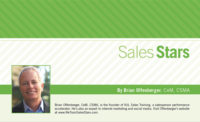Emily is a salesperson for a security company in Ohio that I am working with who was at the end of her rope. It seemed to her that no one was responding to her emails, at least not completely. She was discouraged and looking for solutions.
It’s frustrating to send an email to someone and never get a response. It can be equally frustrating to get an incomplete response.
Sometimes you can avoid this simply by writing a better email. Think about things from the recipient’s perspective: they get hundreds of emails a day; many are poorly worded and trouble to parse and respond to. With that in mind, here are five tips to craft an actionable, easy-to-read email that is easy to respond to:
1. Be extremely clear who the message is addressed to.
If your email is a request for information or something requiring action, sending it to multiple people almost certainly is not going to work. When you address it to multiple people AND don’t identify people by name in the body of the email, you’ve diluted responsibility for the action. No one is likely to act.
Solution: Address your email to a single person (and put others in the CC line) or identify action items by name within the body of the email.
2. Put the purpose of the email up-front.
Don’t write a long preamble before getting to the point/action and expect it to get read. In the news business, they call this “burying the lead.”
Solution: Put the purpose of the email at the beginning and elaborate afterwards. The military refers to it as “BLUF Protocol,” meaning Bottom Line Up Front. Get to the point of why you are sending the email.
3. Be specific.
Compose your email so an 8-year-old could understand what you need, when you need it and who should provide it. Vague email messages can be infuriating and confusing.
Solution: be specific about what you need, when you need it (a date), and who should provide it.
4. Be brief.
If your email is too long, it simply won’t get read, or it won’t be read thoroughly.
Solution: Cull your email down to the essential facts and details. Get to the point as quickly as possible. Use the BLIND method used by the military:
BL = the bottom line, put the most essential information first;
I = impact to the organization so you create context and urgency;
N = next action steps;
D = define any other relevant details.
5. Format properly.
One of the most common mistakes when writing an email is embedding the details of the request into a densely worded paragraph. Messages get lost this way.
Solution: Break longer emails into lists, bullet points or smaller paragraphs. Use bold text to help direct the eyes through the email to the most important parts.
More precise communication can save time and grow your sales. Adopt these best practices, as they have been refined over many years and used by many people. Over time, you will discover that great email responses start with clear communication, which yields faster, better results.







